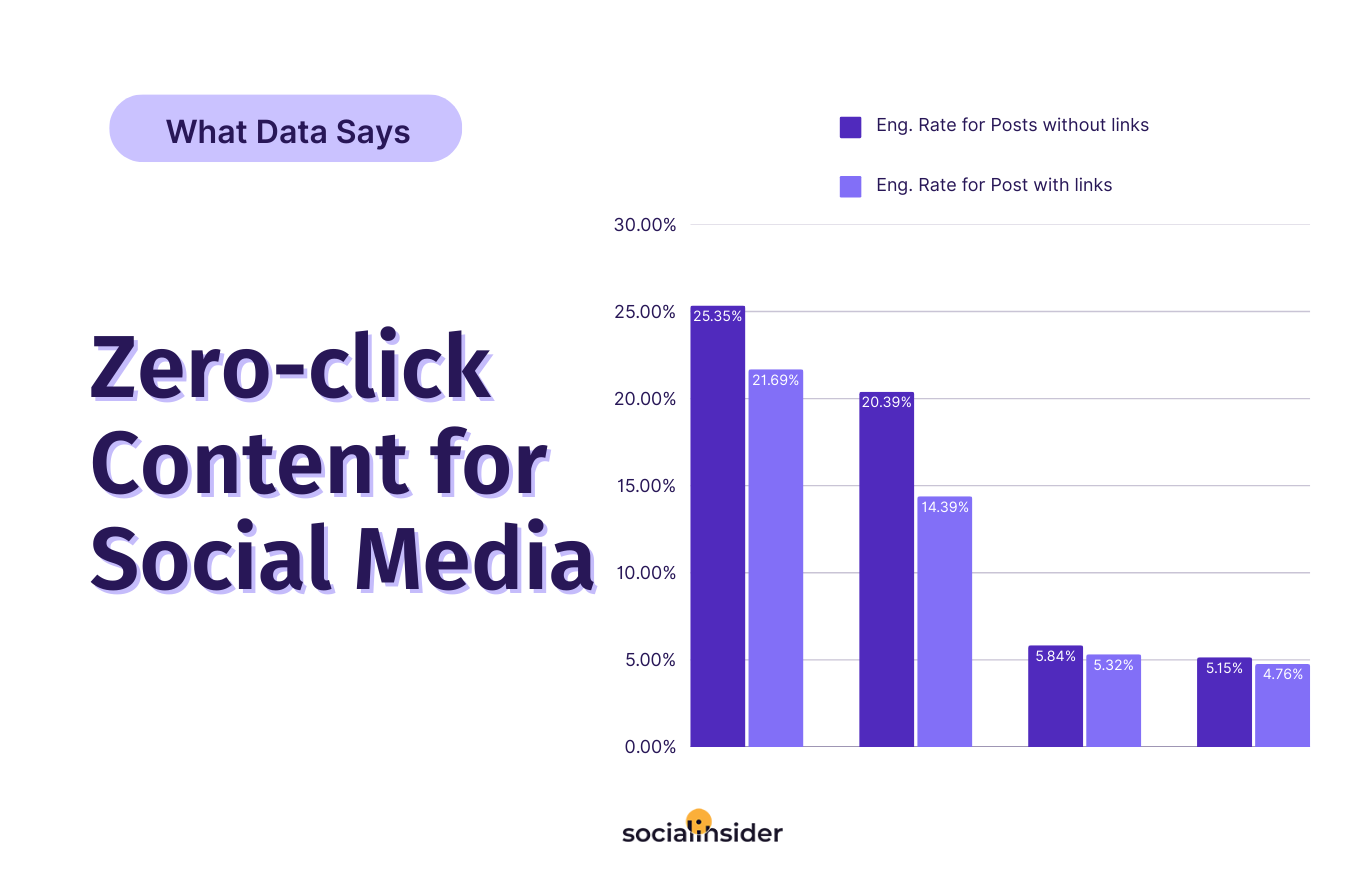Have you ever gone online to find some info and ended up clicking link after link, only to still not get the answer? It’s frustrating, right?
Zero-click content fixes that by giving people the information they need right where they are. No extra steps, no leaving the platform. Social media platforms love it; users do, too because it’s quick and straightforward.
With people scrolling faster than ever, content must grab attention and instantly deliver value. Zero-click content does just that. It engages users without requiring more time or effort and works well with platform algorithms. Why? It matches how we browse today: quick, seamless, and to the point. By making content accessible and easy to engage with, you can create stronger connections with your audience.
This article’ll explain social media zero-click content - why it’s so effective, and how you can create it. Expect practical tips, examples, and insights to help boost your social media presence and engage your audience.
Table of Contents
What is zero-click content?
Why create zero-click content?
Elements of engaging zero-click content
10 Tips for creating zero-click content
The future of content: zero-click content marketing
What is zero-click content?
Zero-click content gives users everything they need without sending them away to another site. Instead of using links to drive traffic, it delivers value right in the user’s feed.
This approach grew as platforms focused on keeping users engaged. It meets people’s needs by offering bite-sized info, quick answers, or insights. Social algorithms favor this because it keeps users in their ecosystem, increasing your content's reach.
On LinkedIn, you’ll often find zero-click content in carousels, text posts, or short videos. You can see it on Facebook and Instagram in photo albums, stories, or videos.
The idea is simple: the less people have to leave the platform, the more likely they are to engage.
But what about organic vs paid content?
You need to keep in mind that zero-click content only works for organic strategies as it keeps people engaged within the ecosystem. When you’re paying for ads, the goal is to move users to your website or landing page for conversions.
Why create zero-click content?
It drives better engagement rates
Picture this: you’re scrolling through LinkedIn or Facebook, and you spot a post with a link. You pause for a second, curious, but most of the time, you don’t click. You just keep scrolling. Why? Because that extra step feels like a hassle, and we’ve all gotten used to instant answers.
Do you even need the info that badly? Probably not.
These habits are one of the biggest social media challenges for marketers
That’s why zero-click content stands out on the timeline. It gives people what they need right away, without asking them to do anything extra. No clicks. No waiting.
Let’s take a closer look at how zero-click content works across different platforms and why it drives better engagement.
Zero-click content on LinkedIn
On LinkedIn, multi-image posts without links see nearly 30% more engagement than posts with links.
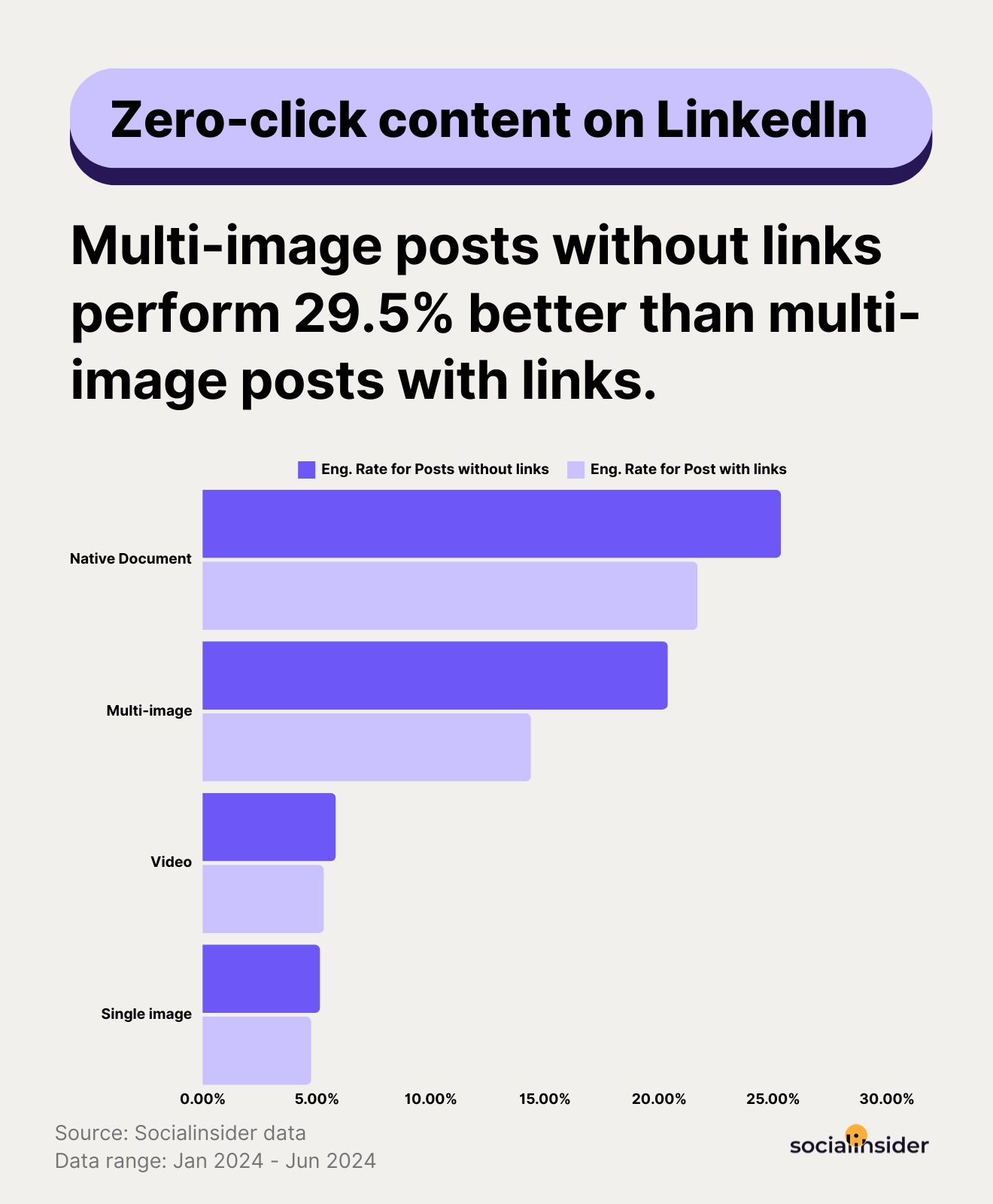
People are far more likely to stop, scroll through, and engage with a post when they aren’t being directed off the platform.
Native document posts (those swipeable PDFs you often see) also show an engagement rate of 25.35% compared to 21.69% for posts with links.
That’s a pretty significant boost when you’re trying to stand out on a platform where content is constantly competing for attention.
LinkedIn’s algorithm favors posts that keep users interacting with the content directly on the platform, and zero-click posts are perfect for that.
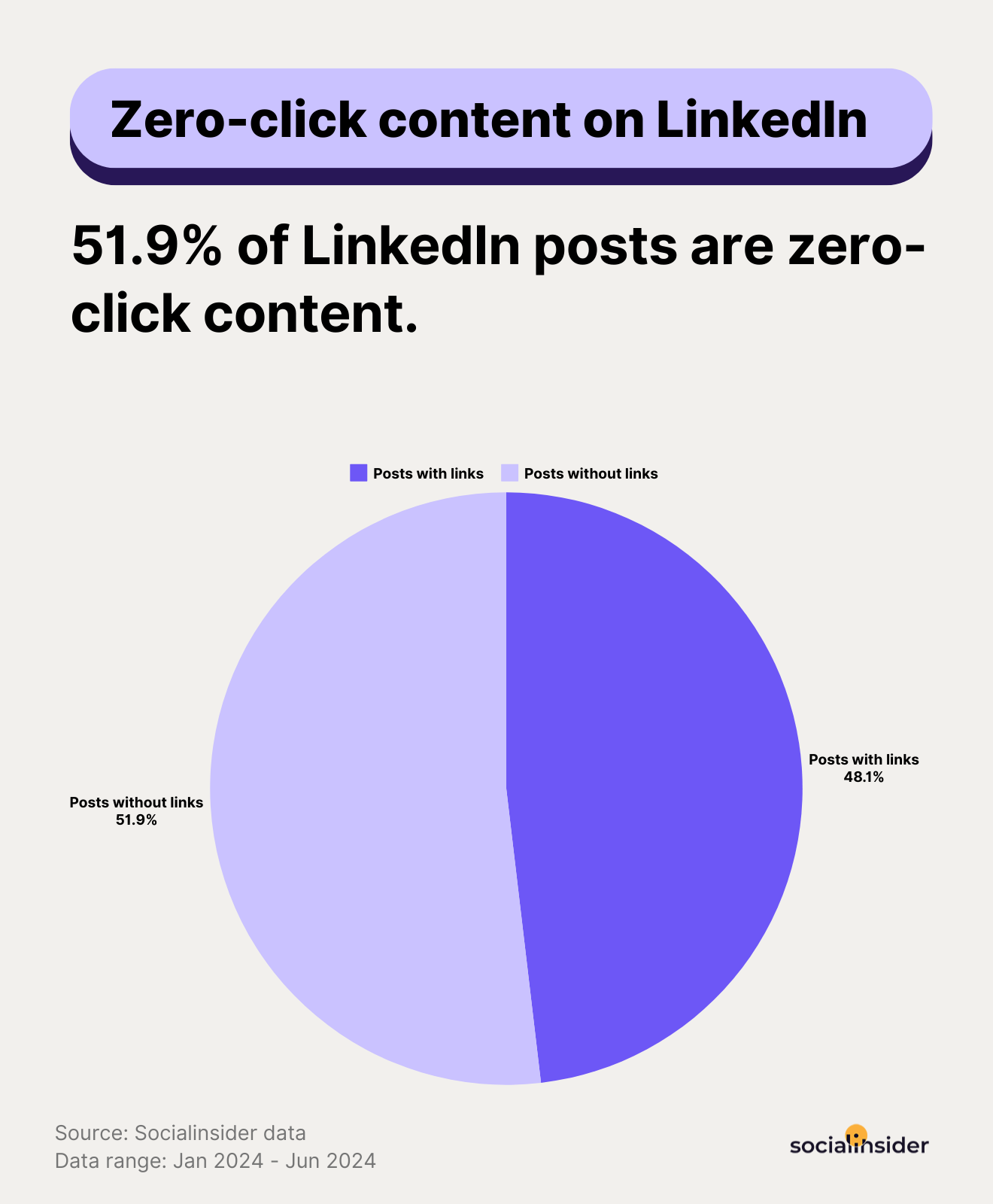
Zero-click content on Facebook
The story is much the same on Facebook. Album posts without links see twice the engagement of those with links. It's not limited to photos—videos without links perform better too. Right now, about 70% of posts on Facebook could be considered zero-click content.
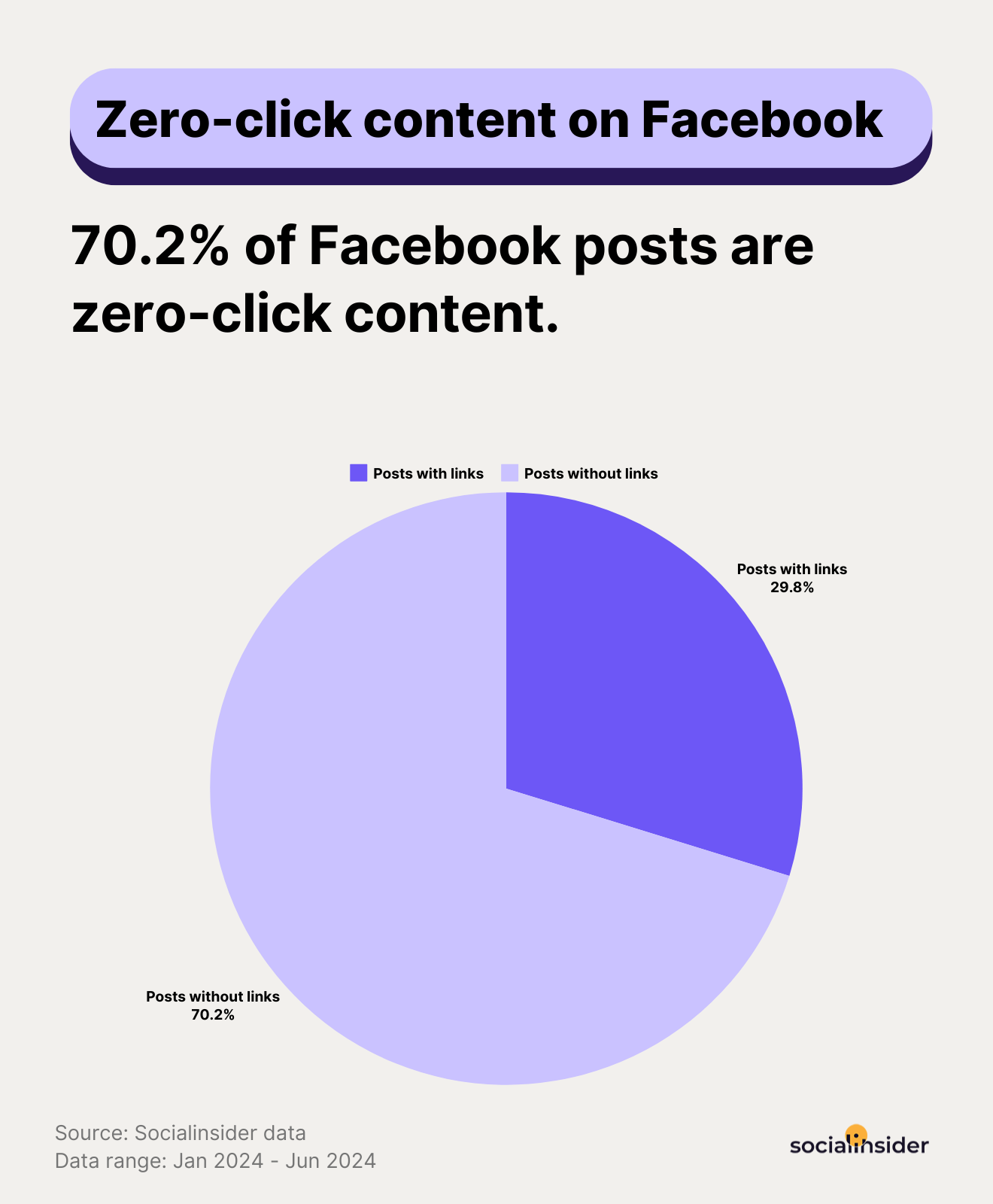
When a post delivers value and keeps people engaged on the platform, they’re more likely to react with likes, shares, and comments. There's no need to leave the platform, which means fewer distractions and more engagment.
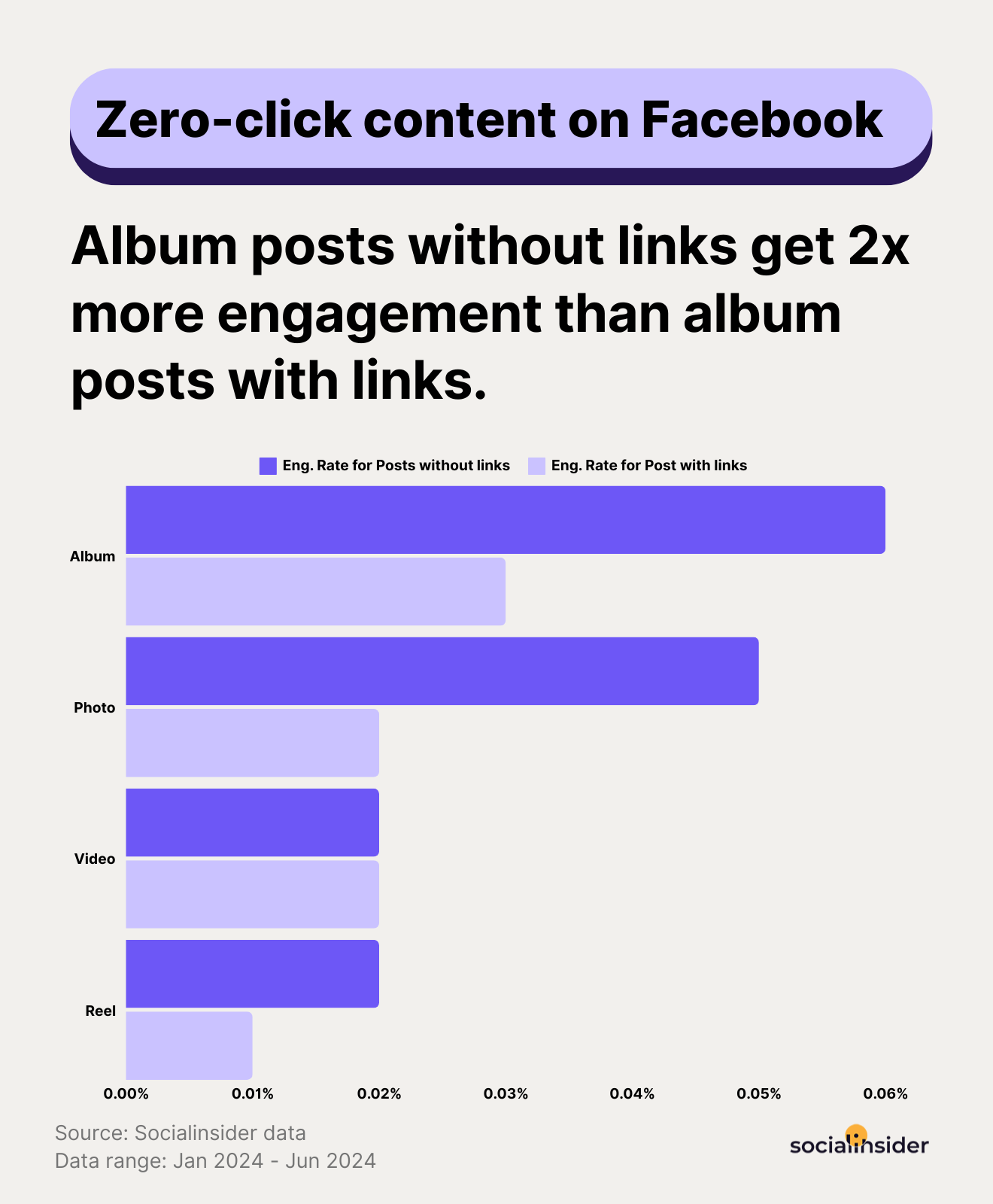
Zero-click content on TikTok and Instagram
TikTok users are used to swiping through a rapid stream of short videos.
The more engagement a video gets, the more likely it is to get a boost by the algorithm.
TikTok favors content that grabs attention quickly and encourages actions like comments, likes, and shares.
Success comes from hooking viewers in the first few seconds and delivering value that keeps them watching.
TikTok’s preferred video length is short, engaging videos (often under 60 seconds) which fits perfectly with zero-click strategies. Crafting videos that hold attention can help you stay visible.
When comparing TikTok vs Reels vs Shorts, TikTok’s fast, dynamic style makes it ideal for zero-click content that holds users’ attention without needing to leave the app.
Instagram works similarly, focusing on content that captures attention quickly. Reels, with their 15-30 second format, work much like TikTok, where more engagement leads to better algorithm performance. But Instagram also shines with carousels (multiple-slide posts) that allow you to tell a story or share detailed information.
As users swipe through each slide, they stay engaged without leaving the platform. Crafting strong Reels and carousels helps keep your audience interacting with your content, boosting both visibility and engagement directly on the app.
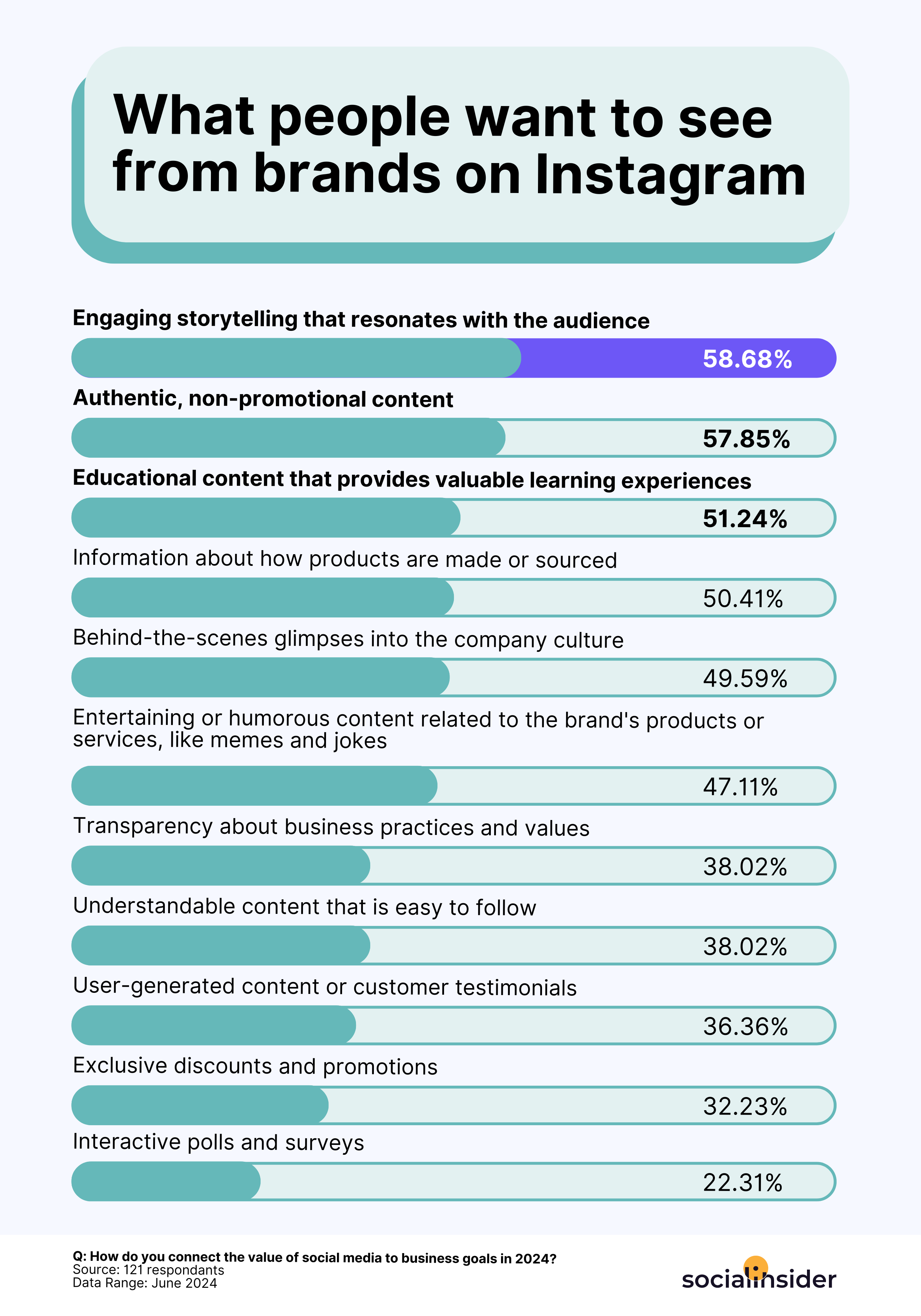
Social media algorithms want zero-click content
So, why is zero-click content so effective? Social media platforms are designed to keep people engaged for as long as possible. They want people scrolling, interacting, and staying within the platform, not jumping to external sites.
When you create types of social media content that stimulate users to stick around, the algorithms reward you.
The longer users engage with your content on the platform, the more visibility it gets. This leads to even more interactions and boosts your reach.
For you as a social media manager, this means your posts are more likely to show up in more feeds, reach more people, and generate more engagement without sending your audience off to your website. And for your audience, get exactly what they want without switching apps or opening new tabs.
Social media audiences want zero-click content.
People are more likely to interact with content that doesn’t interrupt their flow.
When you create zero-click content, you’re making life easier for your audience and giving your content a better chance to thrive on the platform.
Keep your posts easy to digest to create a frictionless experience that benefits everyone.
Elements of Engaging Zero-Click Content
Okay, so you want to start creating standout zero-click content. You’ll need to get creative and strategic.
There are seven elements to include when crafting engaging posts that grab attention and get people to engage.
- Bite-sized information: People scroll fast. Keep your message short and punchy. The quicker they get your point, the more likely they will engage. Think of it like giving snack-sized insights instead of a full meal.
- Answer-first format: Lead with the answer. Start strong and clear. When people immediately see the takeaway, they’re more likely to keep reading and engaging.
- Visual and structural appeal: Make your post easy on the eyes. Bold headings, bullet points, images, or carousels break up the text and make it more engaging and guide people smoothly through your content.
- Platform-specific optimization: Each platform is different. Tailor your content to fit. What works on LinkedIn might not work on Instagram. Adjust your format and style to suit the platform and make your content feel natural and engaging.
- Instant value delivery: Don’t make people hunt for value. Give it to them fast. Whether it’s an insight, solution, or advice, deliver the goods upfront to stop the scroll and spark engagement.
- In-content CTA: Even without a link, you can still encourage interaction with your posts. Ask your audience for comments, shares, or reactions to keep the engagement going within the platform.
- User-centric design: Focus on your audience’s needs. Design your content to be intuitive, clear, and easy to skim. Make sure the interaction is seamless and enjoyable.
These elements work together to create engaging, valuable content that’s perfectly suited for a zero-click strategy.
The goal is to connect with your audience right where they are without making them take extra steps, and these tactics help you do just that.
10 Tips for creating zero-click content
Take a look at your social media content pillars. You likely have educational posts, thought leadership, promotions, and community engagement covered. But with zero-click content proving so effective at boosting engagement, it deserves to be its own pillar. This way, you can give it the attention it needs and make it an integral part of your strategy.
Now, let’s dive into how to master zero-click content with practical tips and examples from B2B brands who are already doing it well.
#1. Start with the hook
The first few seconds or lines of your post are the most important part. You have to grab attention fast. A bold statement, a surprising fact, or a question will do the trick. Your hook should pull people in and make them curious.
For example, Gong.io, a sales intelligence platform, usually begins LinkedIn posts with striking stats or thought-provoking questions. One post, for example, begins with, "Best time to send that email?" This grabs attention and makes the reader want to find out more.
Here’s how to create solid hooks for different formats:
- Carousels: Start with a slide that teases what's coming, like a bold question or surprising stat.
- Short videos: Make the first 3 seconds eye-catching with visuals or an engaging voiceover.
- Threads (X): Lead with a tweet that stops readers, like "Most people are doing this wrong, here’s how to fix it."
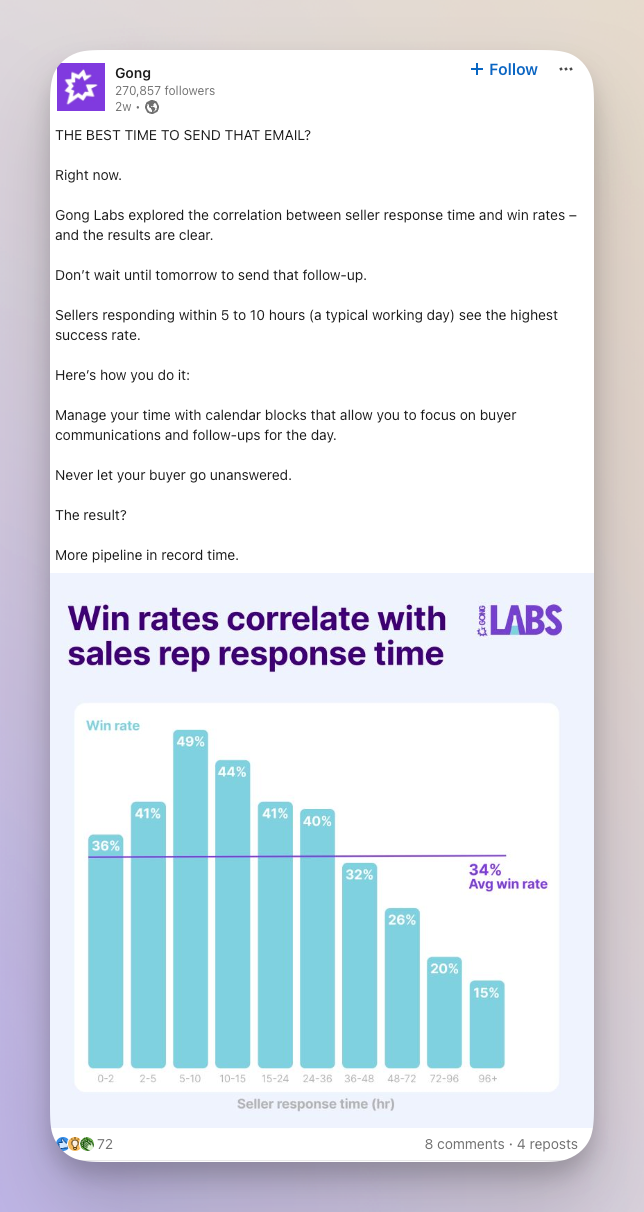
#2. Get to the point
Good zero-click content thrives when it’s direct. So, no room for fluff or long-winded intros. Focus on delivering the key message upfront so the reader gets instant value. When you’re clear and to the point, you respect your audience’s time, and they’re more likely to stick around for the rest of your post.
Consider HubSpot’s B2B content on LinkedIn. They often start posts with a quick summary of the main takeaway for example their new product updates. From the very start, readers know exactly what to expect, and they’re more likely to engage.
Tips for staying direct:
- Use bullet points or lists to break down your key points.
- Stick to one main idea per post, avoiding unnecessary tangents.
- Start with your conclusion or solution, then back it up with supporting information.
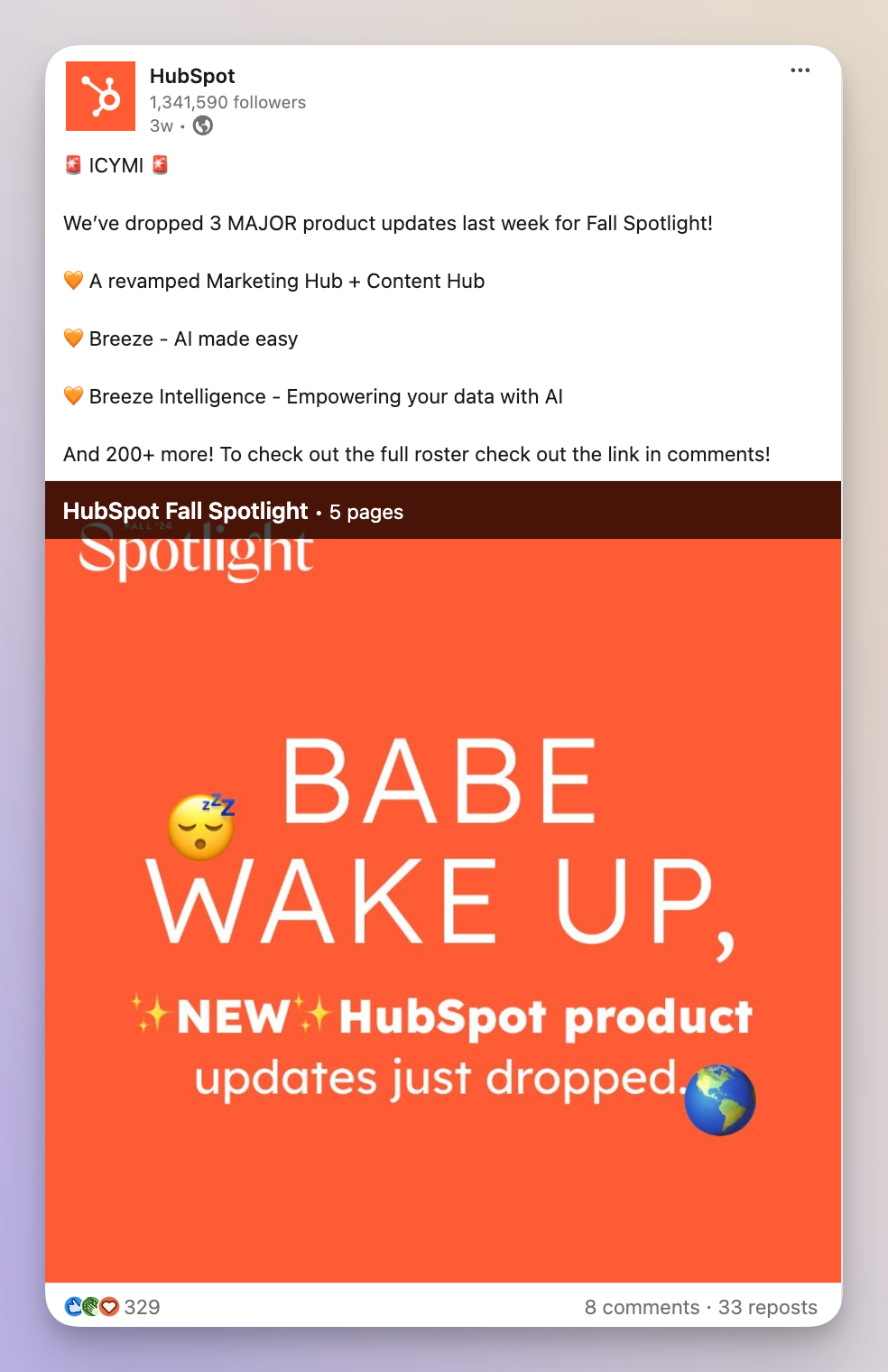
#3. Avoid jargon
Even if your audience knows your industry, too much jargon can be a turn-off. Keeping your language simple and conversational helps more people understand and connect with your content. The goal isn’t to impress with fancy words but it’s to make a personal connection.
Let's look at Salesforce. Even with complex CRM concepts, their language stays clear and easy to follow. Their LinkedIn posts and webinars break down big ideas into everyday terms, which make their content accessible to a wider audience.
Tips for simplifying language:
- Swap out industry-specific terms with more common words where possible.
- Use analogies or examples to explain complicated ideas.
- If you must use jargon, briefly explain what it means in plain language.
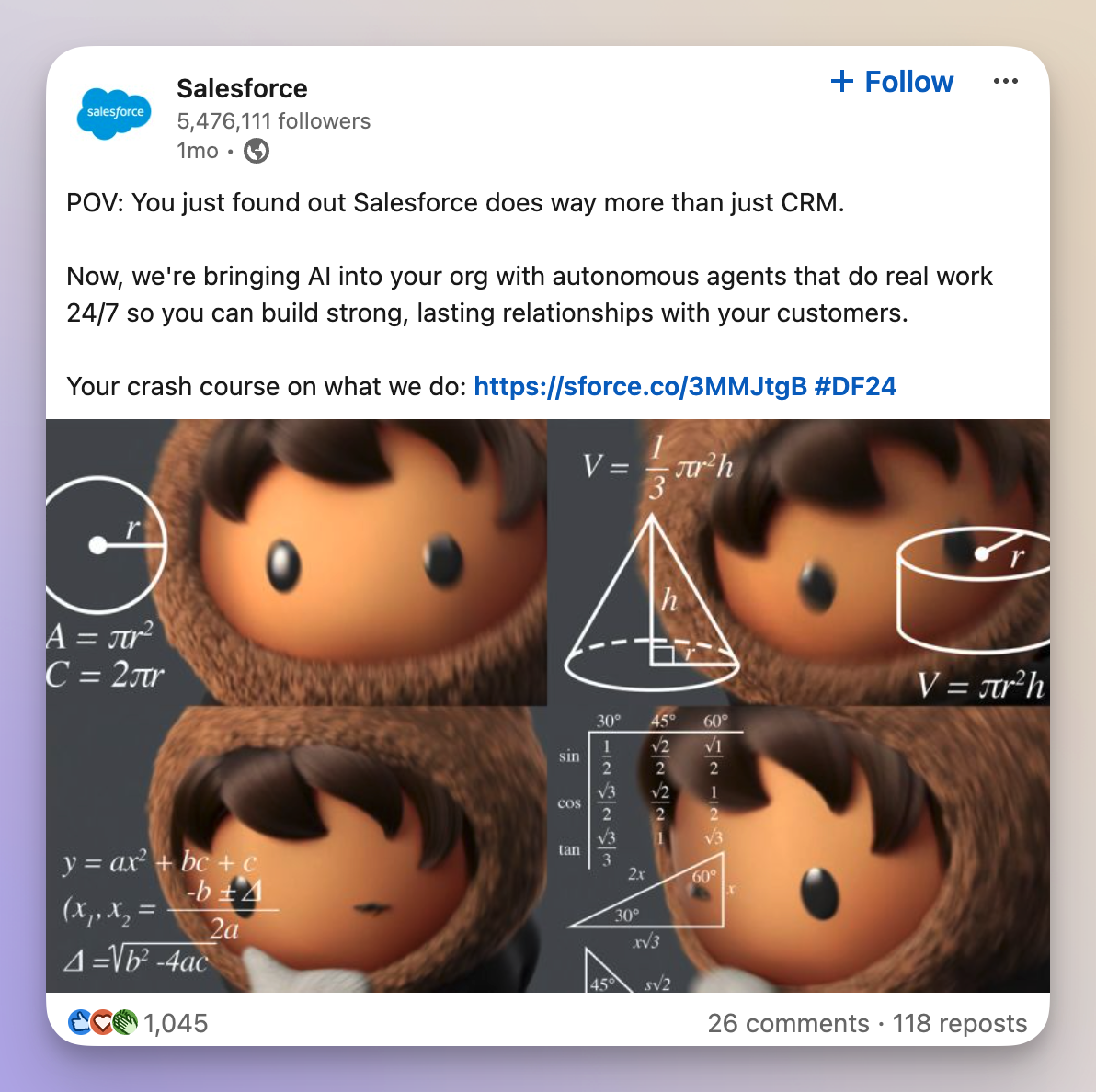
#4. Keep it short
Zero-click content thrives when it’s concise. The length of your content should match the platform’s format and the attention span of your audience. Shorter content, especially on fast-moving social platforms, is more likely to be read and shared.
Hootsuite provides these guidelines:
- Short-form video (TikTok, Reels, Shorts): 60-90 seconds.
- Post captions (Facebook, Instagram, X): 200-300 words.
- Long-form videos (YouTube, etc.): 2-3 minutes.
- Threaded posts (X): Up to 10 posts.
- Carousels (LinkedIn, Instagram): 5-10 slides.
For example, Slack, in its B2B zero-click marketing, frequently uses short-form videos on LinkedIn to explain product features in under a minute. Slacks posts are focused on showing off just one feature or benefit at a time, which makes them easier to absorb.
Tips for keeping posts short:
- Stick to one topic per post, and resist the urge to over-explain.
- Use bullet points or short paragraphs to make reading faster and easier.
- Cut out filler words and redundant phrases.
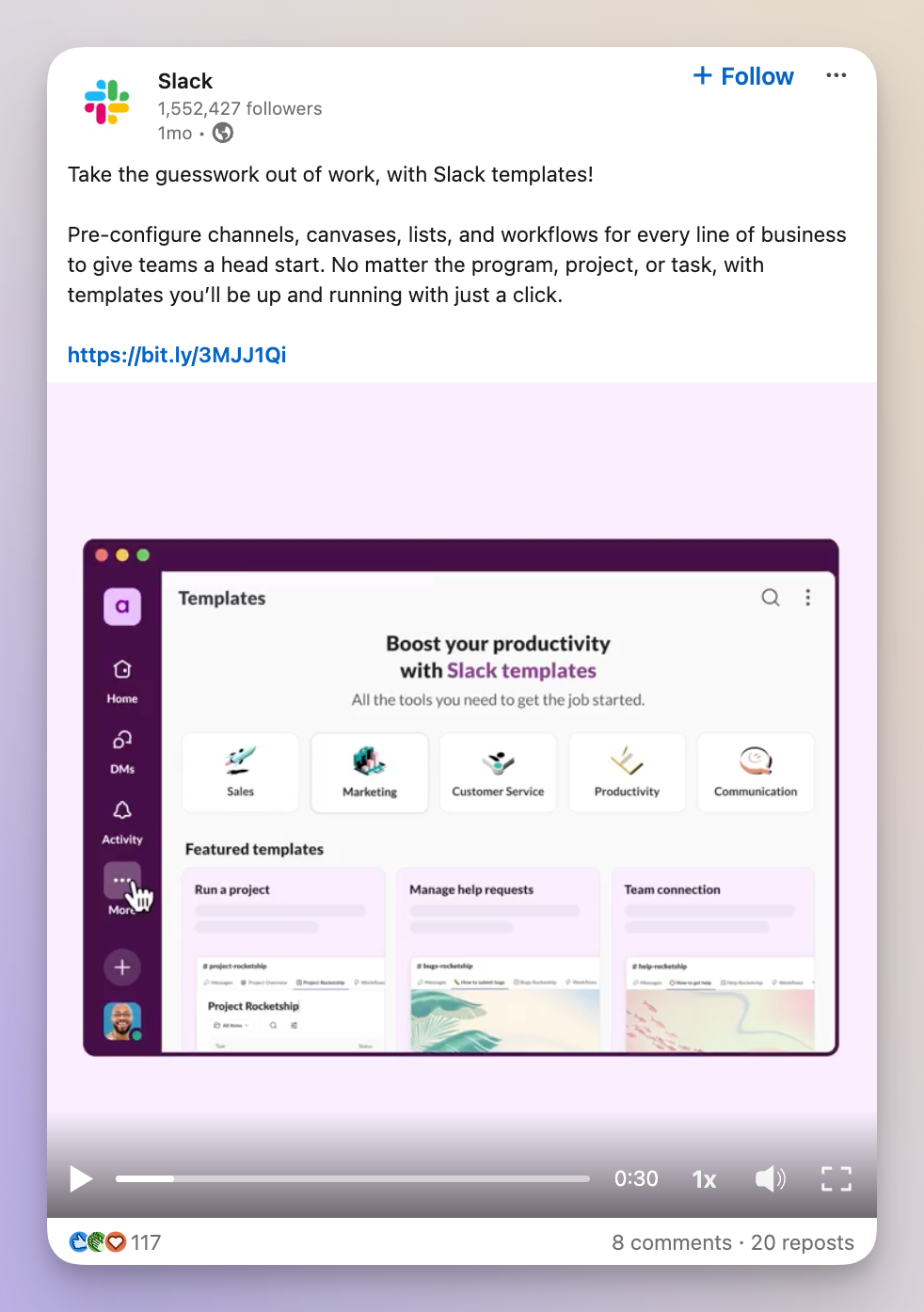
#5. Organize content for easy scanning
People usually skim-read posts before deciding to dive in. That means organizing your content for quick scanning is super important. Do this by structuring your post to highlight the key takeaways. Use bullet points, headings, and visual cues to guide your readers.
Take Socialinsider for example. We structure our LinkedIn posts with bullet points or short, punchy paragraphs. This writing style makes it easy for readers to skim and get the value of the post right away. Every section is clearly laid out, helping people pick out the most relevant info at a glance.
Tips for organizing content:
- Break up your text with bullet points or numbered lists.
- Keep paragraphs short—two to three sentences max.
- Use headings or bold text to highlight key points.
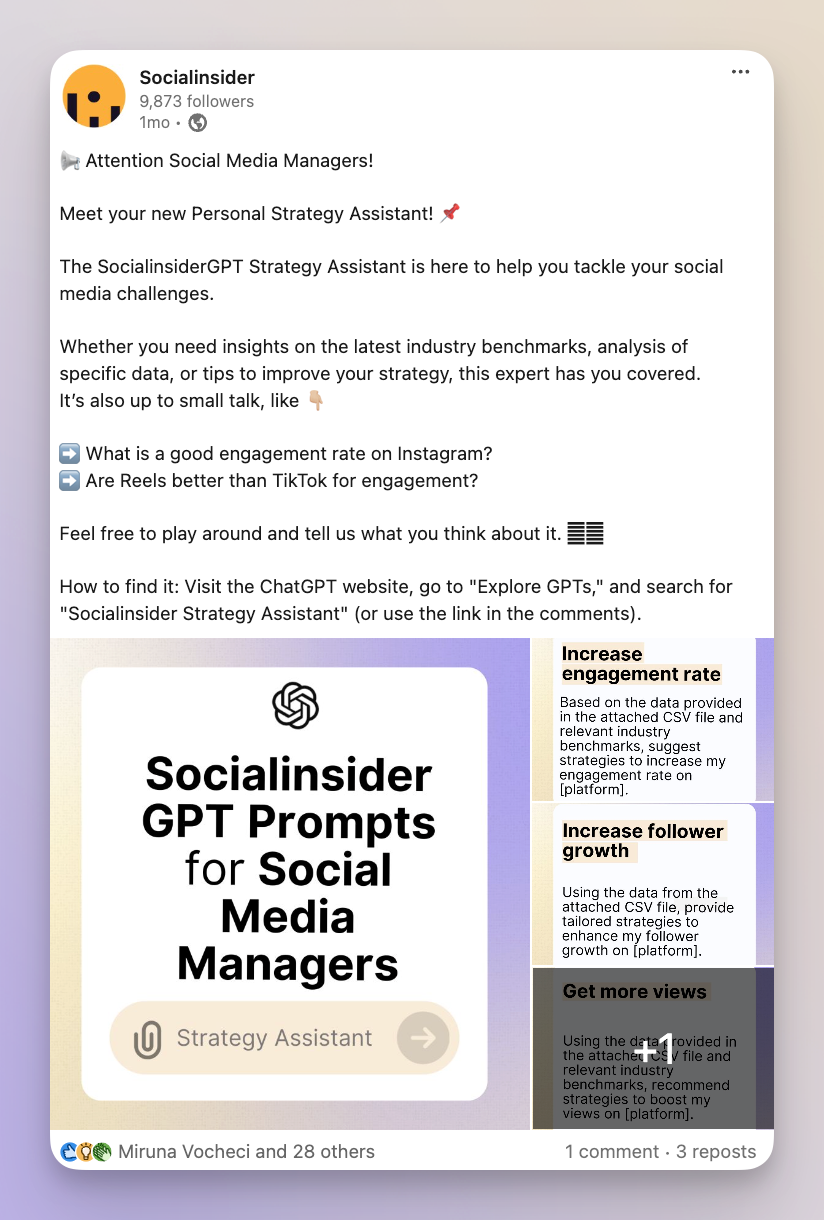
#6. Use eyecatching visuals
Visuals capture attention quicker than text. Adding images, videos, or graphs to your zero-click content can break up the text and make it way more engaging.
Canva creates eye-catching graphics using their own design tool to highlight key points. These visuals aren’t just pleasing to the eye, they reinforce the message and make it stick.
Tips for using visuals effectively:
- Spice up your posts with relevant images or infographics to support your main ideas.
- Keep videos short and focused on delivering value.
- Use bold designs or contrasting colors to stand out in busy social feeds.
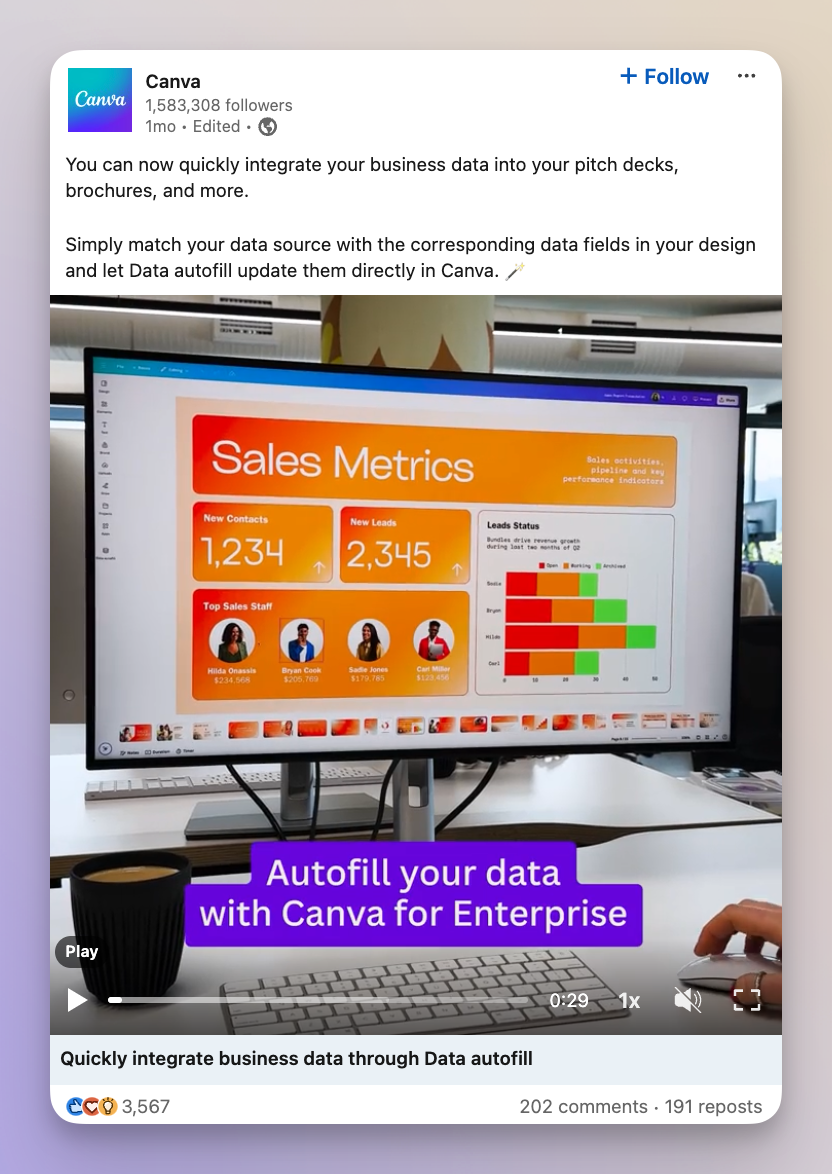
#7. Optimize for social media SEO
Just like with traditional content, social media posts can benefit from a little SEO optimization. Make sure you’re using relevant keywords in your posts to help them get discovered, but in a natural, conversational way that doesn’t feel forced.
An example from Moz, an SEO software company, is how they often incorporate relevant keywords about SEO strategies in their LinkedIn posts, making their content more discoverable on the platform and through search engines.
Tips for optimizing social content:
- Use hashtags that are relevant to your industry and content.
- Incorporate keywords naturally within your posts.
- Use captions and alt-text on images and videos for better discoverability.
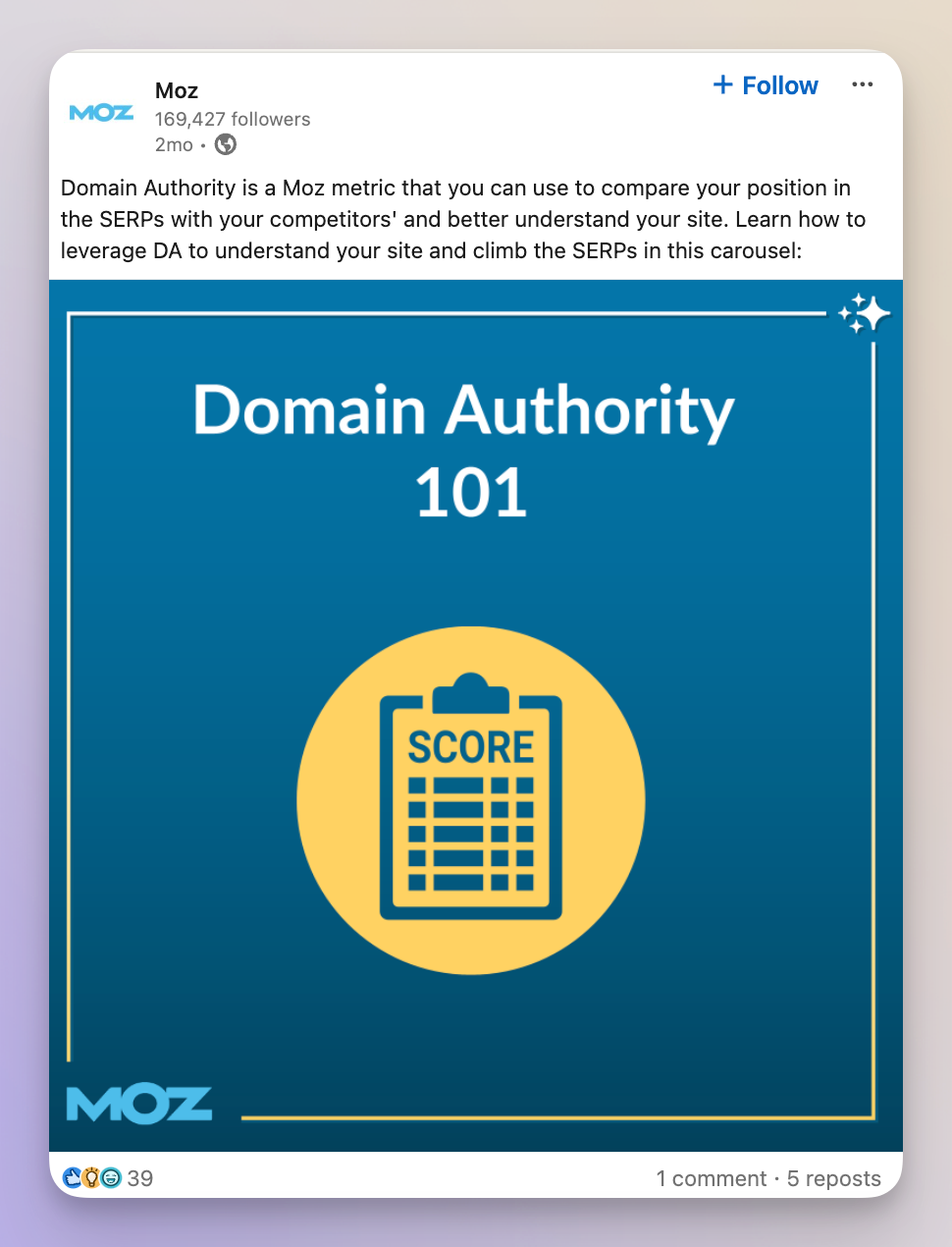
#8. Adapt zero-click content on different platforms
Zero-click content should feel native to the platform where it’s posted. What works on LinkedIn might not work as well on Instagram or X (formerly X (Twitter)). It’s important to tailor your content to each platform’s strengths and audience behavior.
If you check out Adobe, you’ll see that they post tutorials on LinkedIn in the form of carousels or short videos, while on Instagram, they focus on stunning images and short, creative stories that fit the platform’s aesthetic.
Tips for adapting content:
- On LinkedIn, use carousels or text-based posts for professional insights.
- On Instagram, focus on high-quality images or short videos with captions.
- On X, keep posts short, engaging, and conversational, using threads for deeper insights.
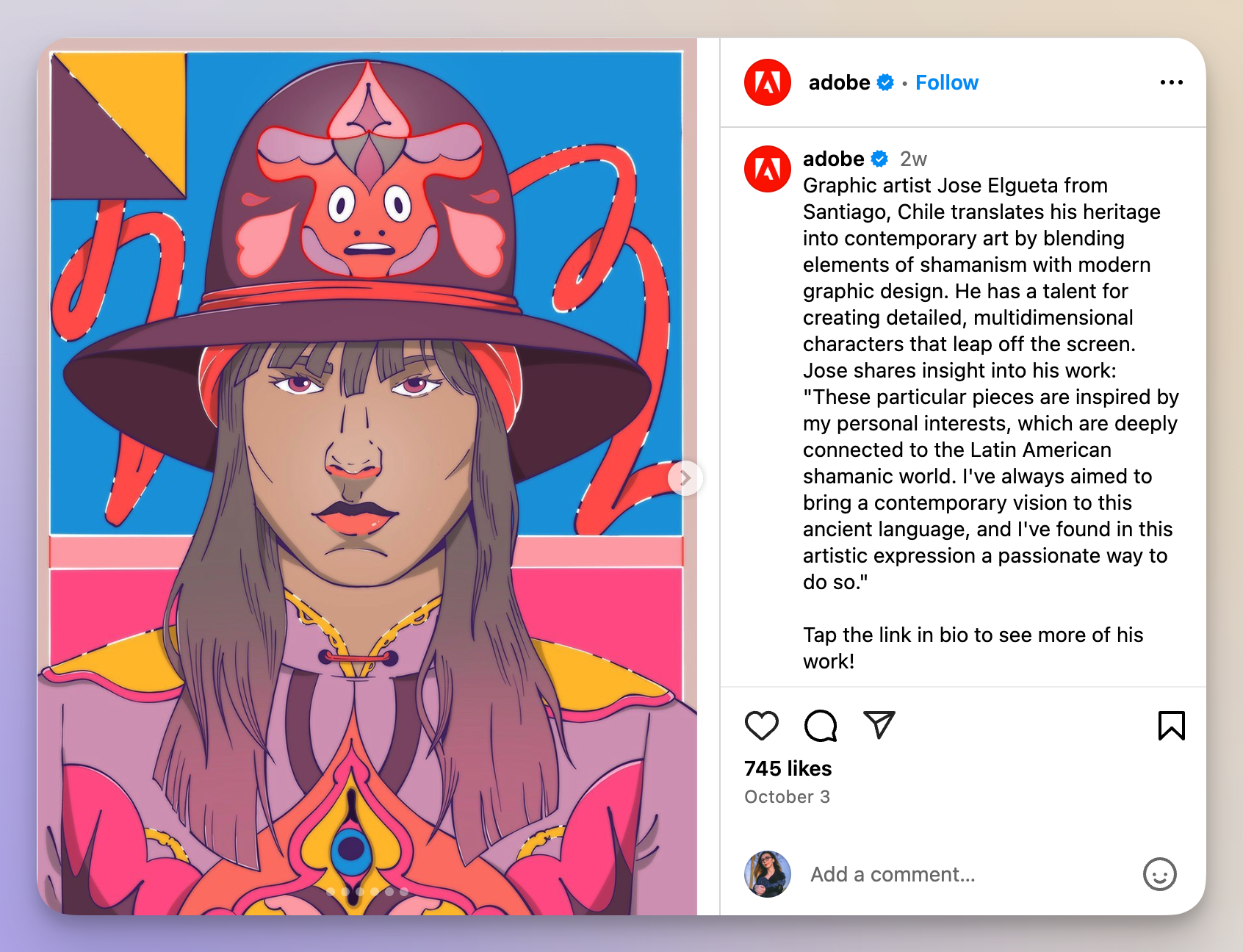
#9. Repurpose blog articles
One of the best things about zero-click content is that it doesn’t have to be created from scratch every time. You can repurpose longer blog posts or articles into shorter, bite-sized pieces for social media.
For example, Ahrefs frequently repurposes its long-form SEO guides into short LinkedIn or X posts. They break down the main points into a few digestible insights, which still deliver value without requiring users to read the entire article.
Tips for repurposing content:
- Break down longer blog posts into short tips or takeaways.
- Use quotes or stats from your articles as standalone posts.
- Turn a long article into a series of posts that build on each other.
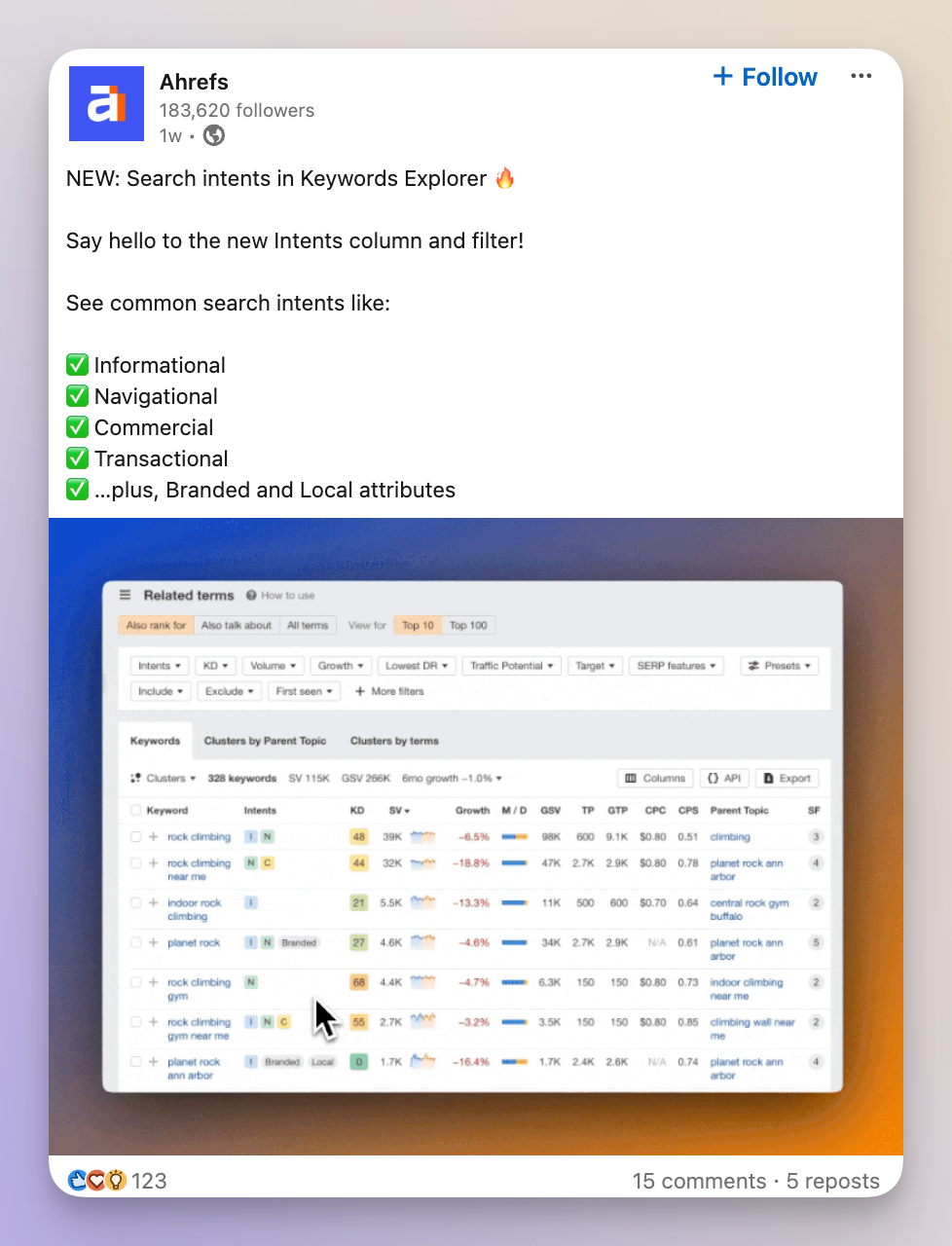
#10. Measure the performance of zero-click content
Tracking how your zero-click content performs is important for optimizing future efforts. Keep an eye on key metrics like post impressions, engagement rates, and follower growth to see what’s working and what isn’t.
For instance, posts form SocialInsider consistently measure engagement metrics like likes, comments, shares, and follower growth to see which posts resonate most with its audience. It uses this data to refine its content strategy and improve future posts.
Tips for measuring performance:
- Track post impressions to see how many people are seeing your content.
- Monitor engagement rates (likes, comments, shares) to gauge interaction.
- Look at follower growth to measure how your zero-click content expands your audience.
By applying these 10 tips and learning from the successes of top B2B brands, you’ll be able to craft zero-click content that always performs better.
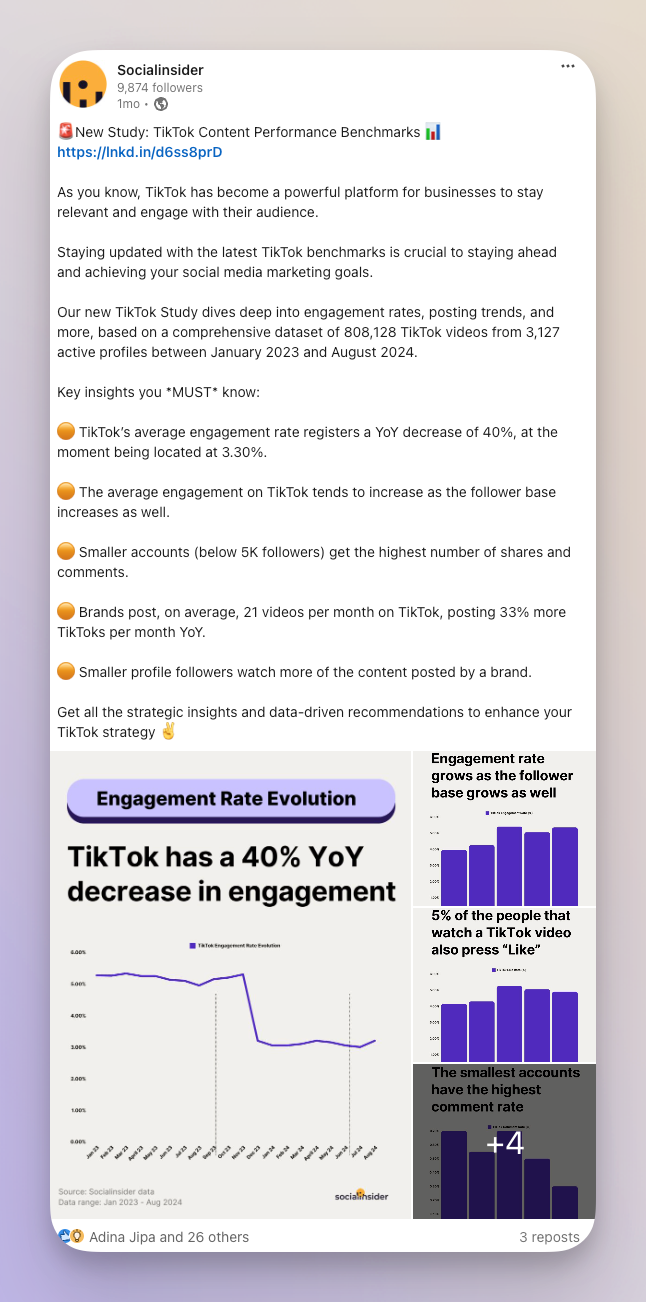
The future of content: zero-click content marketing
Digital marketing has undergone a massive change over the last decade, and it often feels hard for content and social marketers to keep up.
The biggest change is how people consume content on social media.
The days of driving social media traffic to a website through links are gone. Now, algorithms are designed to keep users engaged within their ecosystem, which is where zero-click content comes in.
Your social and content strategy should work hand in hand to deliver value directly on the social media platform itself without asking your audience to take the extra step of clicking a link to get what they need.
The problem with traditional link-based marketing
For years, the approach to traditional content distribution was pretty straightforward: create content (like a blog post), share it on social media, and drive traffic back to your site. This used to work so well that publishers, bloggers, and brands would pump out content, spread it across their social networks, and watch the clicks roll in. More clicks meant more chances to convert those visitors into email subscribers, buyers, or loyal fans.
But things started to change. Platforms like Facebook, LinkedIn, X (Twitter), and Instagram realized they didn’t want to send users away; they wanted to keep them scrolling, liking, commenting, and interacting within their own walls. It made sense for them. This is because the longer a person stays on a platform, the more ads they see and the more data the platform collects. The more engagement they keep in-house, the better it is for their business.
This is why posts with outbound links started to see a drop in performance. Social media algorithms began deprioritizing content that sent users off-site, and suddenly, those link-heavy posts weren’t getting the reach or engagement they used to.
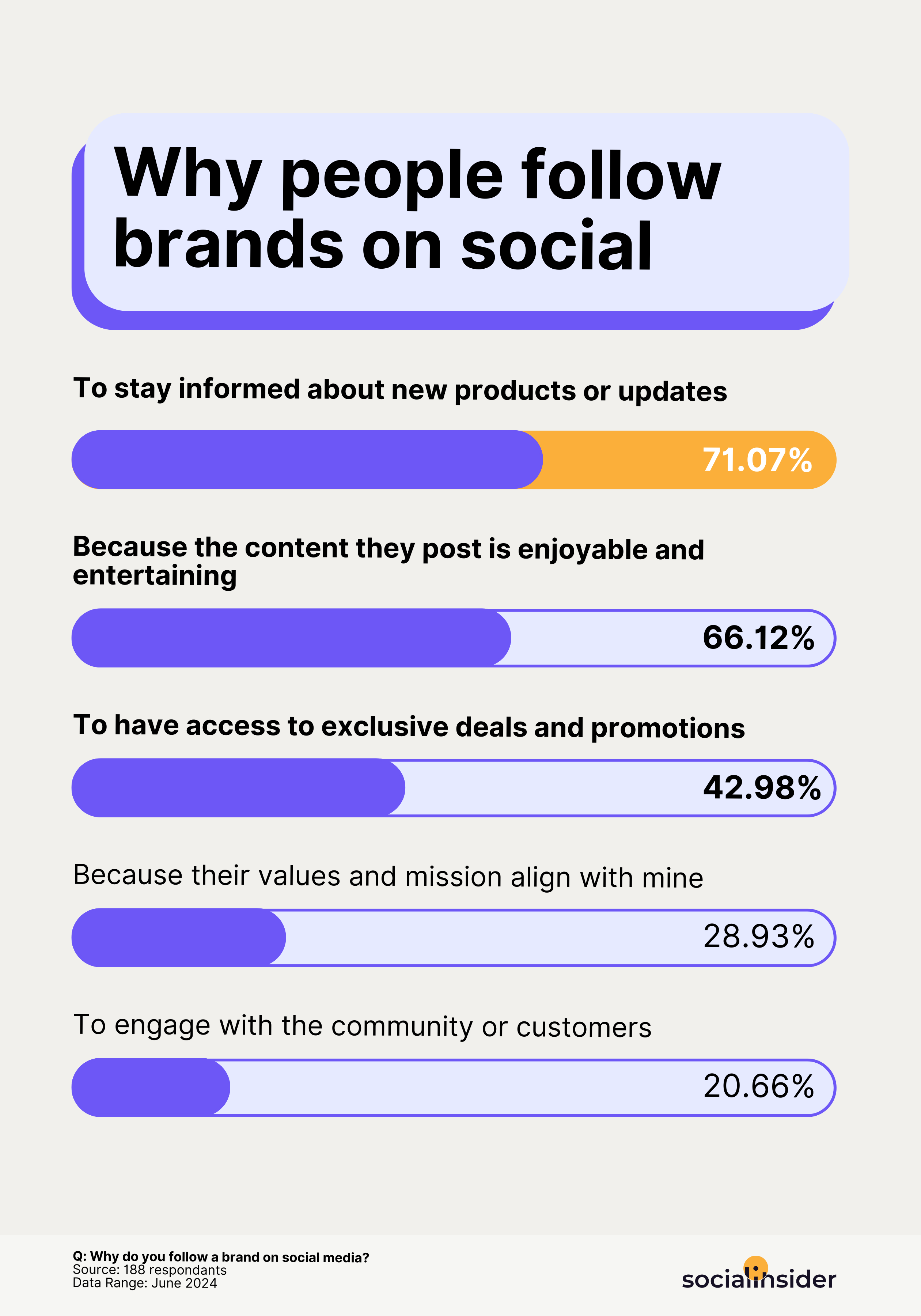
Why zero-click content is the new strategy
Zero-click content really flips the old content model on its head.
Instead of sending people away to an external site, your new strategy should be creating content that offers value on the platform. This could be anything from a thought-provoking post on LinkedIn to an insightful X (Twitter) thread or an engaging Instagram carousel.
The goal is to deliver information or entertainment without asking users to click away.
This zero click approach is much more aligned with how social media platforms currently operate.
Platforms are built to keep users in their ecosystems, and they reward content that does just that.
Posts that keep users engaged on the platform—through likes, comments, shares, and even just longer time spent reading—perform better than those that try to direct users elsewhere.
How platforms prioritize zero-click content
So, let’s break down what’s really going on behind the scenes.
Social media platforms like LinkedIn, Facebook, Instagram, and even Google have adjusted their algorithms to favor content that keeps people on their sites. If you’ve ever noticed that your posts with external links aren’t performing as well as they used to, this is why. These platforms have become very intentional about reducing the visibility of posts that encourage users to leave.
Take Google, for example. About two-thirds of all searches now end without a click. People can find the answers they need directly within Google’s search results, through things like featured snippets or instant answers, rather than clicking through to a website. Social platforms are doing something similar, keeping users engaged in their feeds rather than clicking away.
For social media posts, this means that the more native and self-contained your content is, the better it will perform. Instead of linking to a blog post, you might turn the key points of that blog into a carousel post or a text-based LinkedIn update. Instead of pushing people to your YouTube channel, you could create short, engaging clips for Instagram Reels or TikTok that deliver value right in the app.
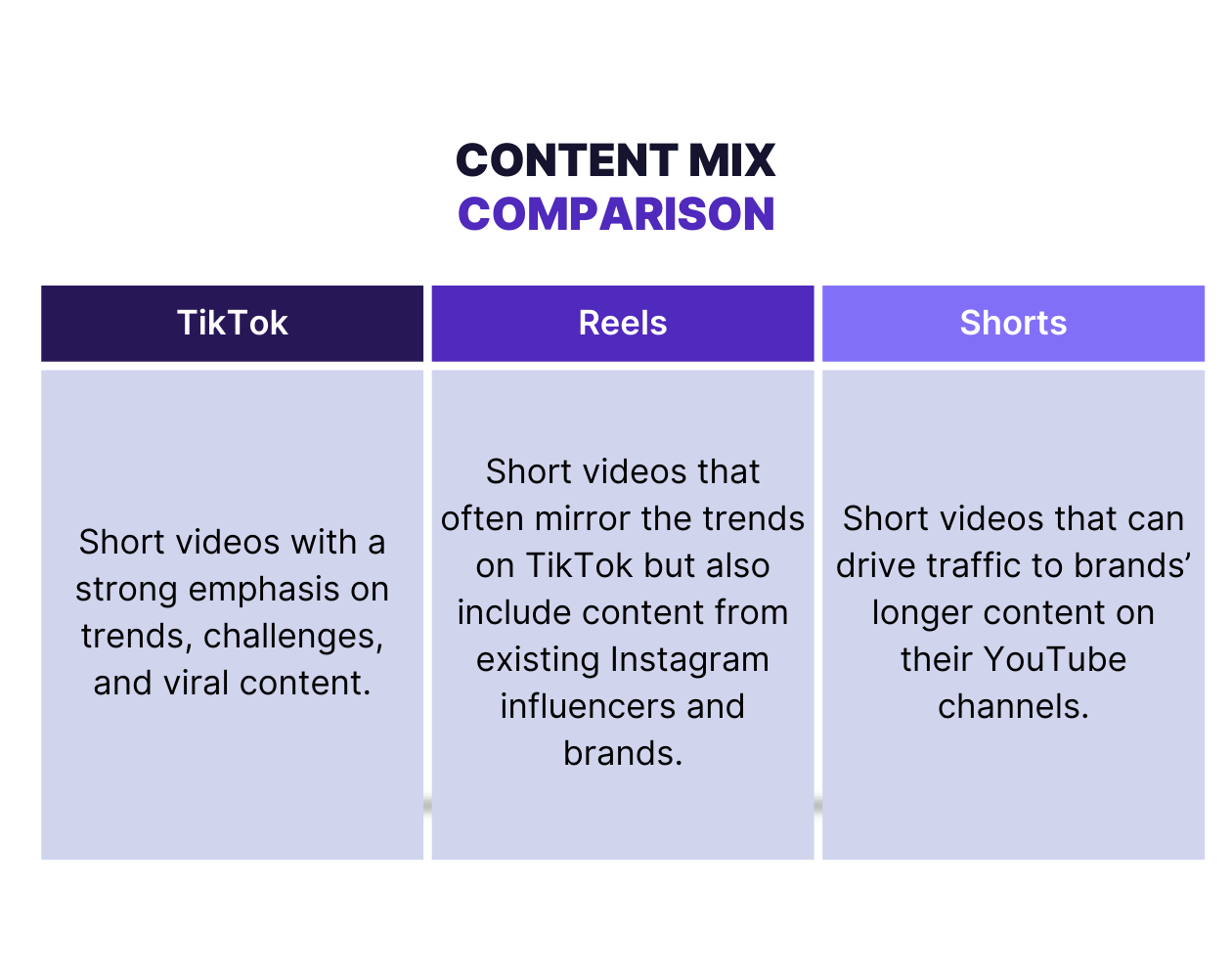
Adapting to the zero-click world
The big takeaway here is that social media marketers need to adapt. If platforms push against outbound links, the focus must shift to content that lives on the platform itself.
Here’s how to create social media content that’s in line with this shift:
- Create platform-native content: Whether you’re on LinkedIn, Instagram, or X , design your content to fit the platform and your social media personas. On LinkedIn, you might write a thoughtful, long-form post or share a document as a carousel. On Instagram, you could create a series of slides that break down a key insight, and on X (Twitter), a thread that tells a story in short bursts. The key is to give your audience everything they need without requiring them to leave.
- Engage for engagement’s sake: The goal of zero click content is to spark interaction. Instead of focusing on link clicks, the aim is to get people involved through comments, shares, and spending more time on your post. Social media algorithms like zero click content because it favors this kind of activity and rewards it by pushing your content to more people. The more engagement you get, such as a conversation in the comments or a quick share, the better your chances of expanding your reach. It’s important to create content that invites your audience to pause, react, and engage right there in the moment.
- Prioritize shareability: Zero-click content is beneficial because it’s easy for people to share within the platform. Since everything they need is already there, they’re more likely to share it with their own network, which increases the reach of your content organically. The easier you make it for people to engage without extra steps, the more your content will get amplified across the platform.
- Tailor your content for each platform: What works on LinkedIn probably wont work on Instagram or X. Each platform has its own set of rules and zero-click behaviors, so you’ll need to create content that feels native to that specific platform. On LinkedIn, this might mean a detailed post with insights or statistics, while on Instagram, it could be a visually engaging carousel or Reel.
The long-term benefits of zero-click content
While zero-click content might not immediately send thousands of visitors to your site, it can do wonders for long-term brand trust and engagement. It’s helpful to think of it as moving people down a funnel.
Here’s how:
- Building strong relationships:
The idea of social media is to keep it social. If you were presenting in front of a room of hundreds of people, you wouldn’t direct them out of the door to another room to find more information. No, you would deliver value to your audience right then and there. By consistently sharing useful information on your channels, you create stronger bonds with your audience, who’ll eventually think of your brand when they need help in your area of expertise.
- Get More Eyes on Your Content:
As your audience engages with your posts, the platform’s algorithm rewards you with more visibility. The more they react, the more your content reaches new people. You don’t have to pay for ads when the algorithm works for you.
- Keep People Coming Back For More
When you post consistently, your audience knows they can count on you for valuable, bite-sized insights. By providing consistent insights, you'll eventually build an expectation. Your audience will check in for your updates because they know there’s something good is coming.
- Stay Top of Mind
As people engage with your posts, your brand will stick. The more they see your name, the more they associate you as the solution to their business problems. They’ll choose you because they already know you and trust the value you provide.
Looking ahead - zero click marketing
It’s simple: deliver value where people are already scrolling. Craft content that feels native to the platform. Let your audience interact with your brand without leaving the app.
Zero-click content isn’t just a passing trend, is the new way content distribution works, driven by how platforms now operate. To succeed, embrace these changes. Focus on content that works within the platform’s ecosystem instead of trying to redirect traffic.
How Socialinsider can help?
Socialinsider makes it easy to track the above metrics in real time. You’ll get detailed insights into how your posts are performing, you can see what’s working and what needs adjustment. SocialInsider helps you monitor engagement rates, impressions, follower growth, and time spent on post, all in one place.
By using these insights, you can continually refine your zero-click strategy, ensuring that your content not only reaches more people but also resonates with them. The more you understand your audience’s behaviors, the better you can tailor your content to meet their needs.
Ready to create zero-click content?
Start using SocialInsider to track your performance, tweak your strategy, and build stronger, lasting connections with your audience. The deeper your insights, the more effective your content will be.
Final thoughts
Once you’ve started creating zero-click content, you need to track its success.
Since zero-click content focuses on engagement, not outbound traffic, pay attention to these social media metrics:
- Post Impressions: How many people are seeing your content? This shows how well your content is distributed across the platform.
- Engagement Rates: Track likes, comments, shares, and saves to measure how actively people interact with your posts. These interactions are what platforms reward, pushing your content to more users.
- Time Spent on Post: Social media platforms measure how long users stay engaged. The longer the user sticks around, the more your content is resonating.
- Profile Visits and Follower Growth: Higher engagement often leads to more profile visits and followers, which is a good sign that your content is building trust and brand awareness.
FAQs on zero-click content
Why should I use zero-click content?
Social media platforms love it when you keep people on their site. Zero-click content helps with that by boosting your post’s visibility and engagement. Instead of driving people away with links, you’re working with the platform’s algorithms to get more eyes on your content.
How does zero-click content help build trust with an audience?
Zero-click content offers immediate value without the need for extra clicks, making it easy for your audience to consume and engage with your message. Over time, this consistent delivery of valuable content builds trust and positions your brand as a reliable source of information.
What metrics should I track to measure the success of zero-click content?
To measure the impact of zero-click content, focus on engagement metrics like post impressions, likes, comments, shares, time spent on posts, profile visits, and follower growth. These metrics clearly show how well your content is resonating with your audience.
Can zero-click content work across all platforms?
Absolutely! You just need to tweak it to fit each platform’s style. On LinkedIn, you might use a carousel with key insights, while Instagram loves short, snappy Reels. For X (Twitter), a well-structured thread works wonders. Tailor your approach, and you’re good to go.
What are the long-term benefits of using zero-click content?
Zero-click content might not drive tons of traffic to your website right away, but it does something even better. It builds a loyal, engaged audience over time. More trust leads to more followers, and eventually, more conversions. It’s a slower process, but one that pays off long term.
